On The Hunt For Desert Bees
We followed the biologists searching for an oil-eating bee in the California desert.
During our recent Science Friday segment about springtime wildflower blooms, UC Riverside bee biologist Hollis Woodard talked about the wild desert bees that profit from this year’s abundant flowers. While she was on, she shared some awesome bee lore: like the fact that deserts are actually bee biodiversity hotspots; that the majority of bees are solitary and live underground; and that one desert-dwelling bee, Centris rhodopus, has a really weird diet: it collects oil from the fuschia flowers of the Krameria bicolor bush to feed its larvae.
That unusual relationship between the Centris bees and Krameria was first characterized in the 1970s by a couple of bee science giants, the husband-and-wife team of Jack Neff and Beryl Simpson. Now Woodard and her colleague Kristal Watrous are hoping to study that relationship in more detail, to learn more about the unique high-fat diet of these wild bees.
Last week, they invited me out to see these desert bees for myself. The trip was a recon mission to scope out potential study sites and to collect wild bees near the Steele/Burnand Anza Borrego Desert Research Center, a desert outpost about three hours southeast of Los Angeles. And there, among the blooming brittlebush, creosote bush, ocotillo, indigo bush, and Krameria, is where we went hunting.
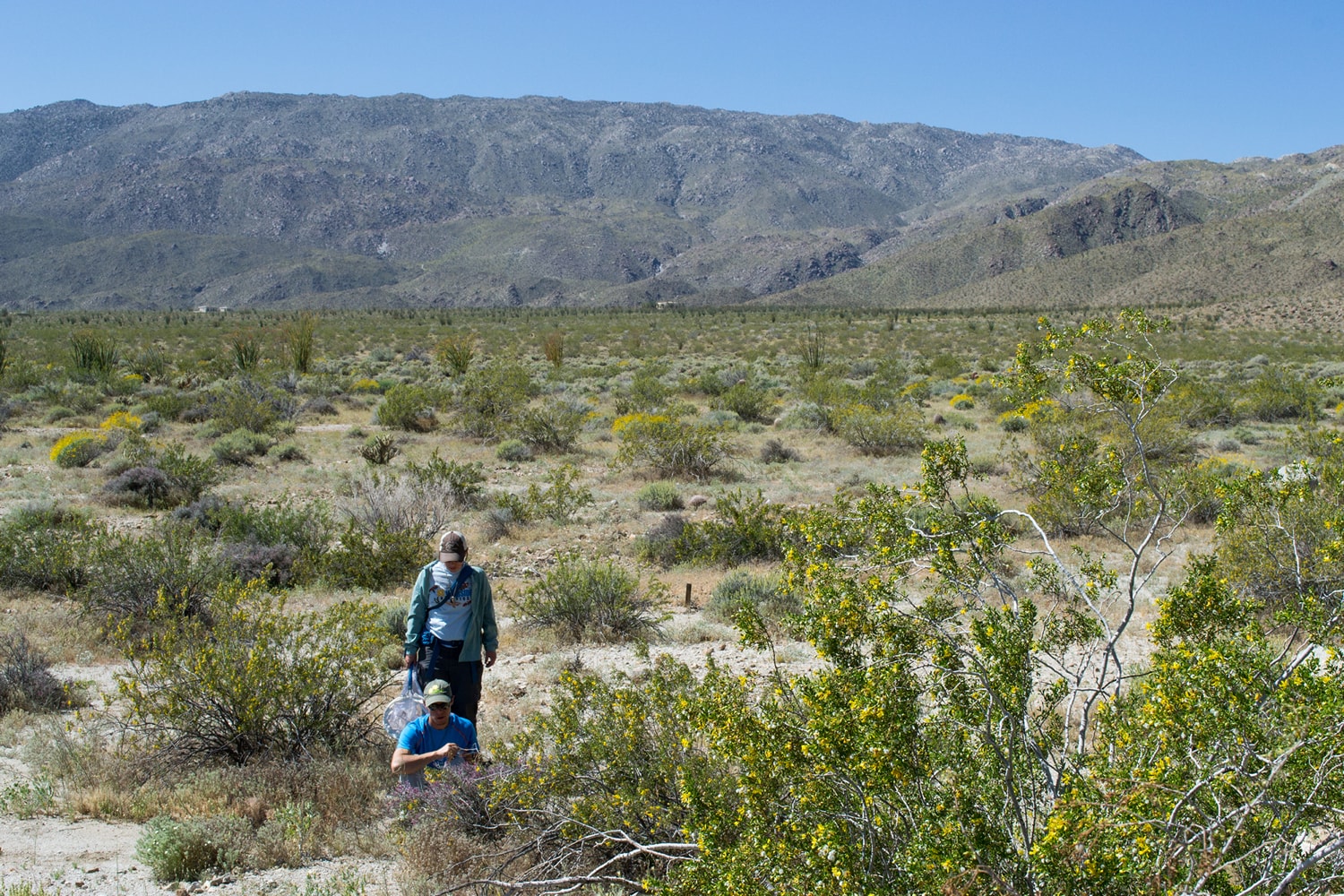
Kristal Watrous and her husband Josh Der, a botanist at Cal State Fullerton, hunt for wild bees in the open desert near the Steele/Burnand Anza Borrego Desert Research Center. Photo by Christopher Intagliata.
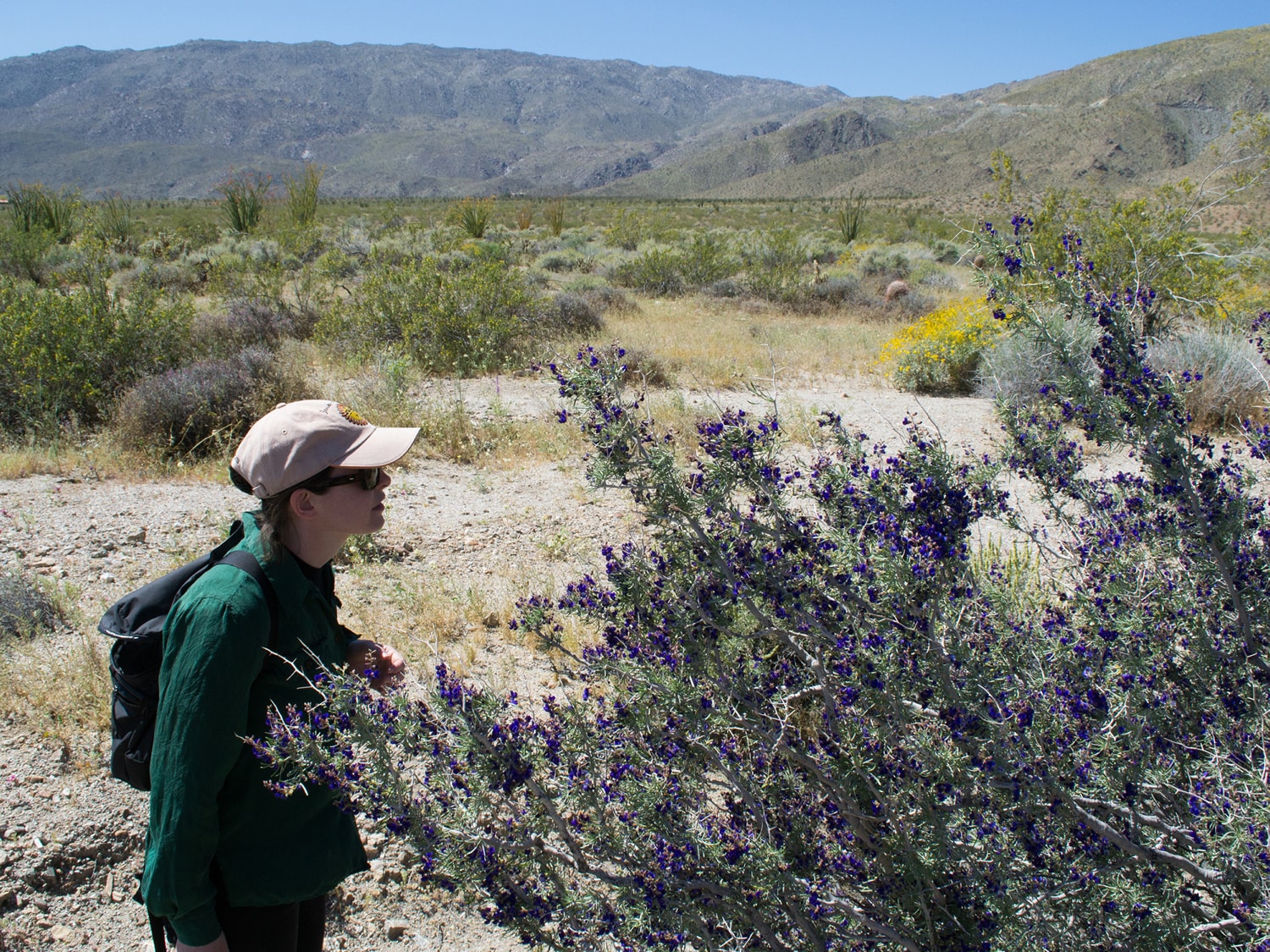
Hollis Woodard watches an indigo bush (Psorothamnus schottii) for bee visitors. Photo by Christopher Intagliata.
Got to tag along w/ bee biologists in Anza Borrego last wk! Here’s @melittophile explaining how Centris bees gather oil at Krameria blossoms pic.twitter.com/nOzeW5vTgN
— Chris Intagliata (@cintagliata) April 4, 2017
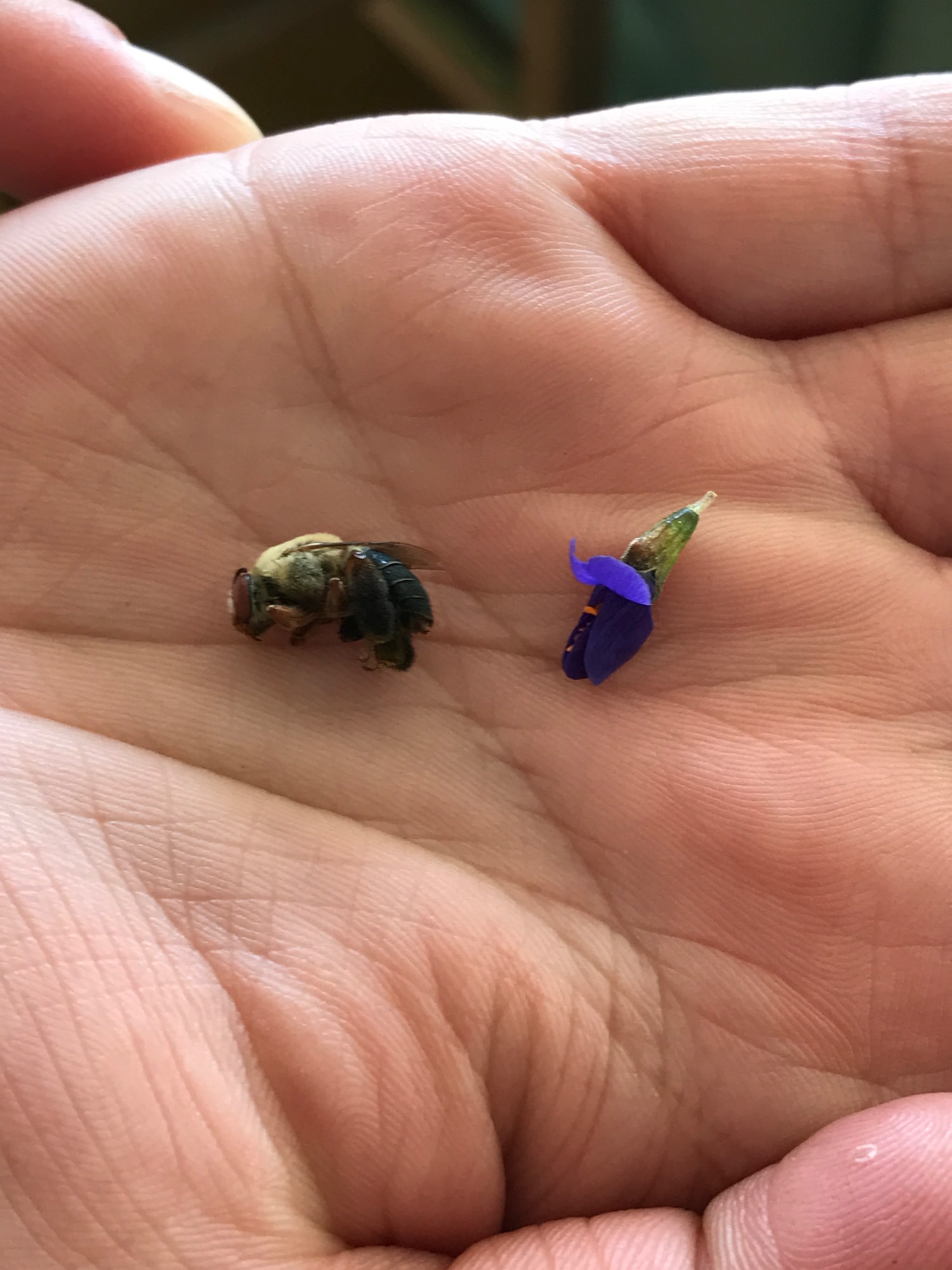
An oil-foraging Centris bee, collected on an indigo bush. Only the Krameria flowers have oil, but the bees visit other flowers to supplement their diet. Photo by Christopher Intagliata.
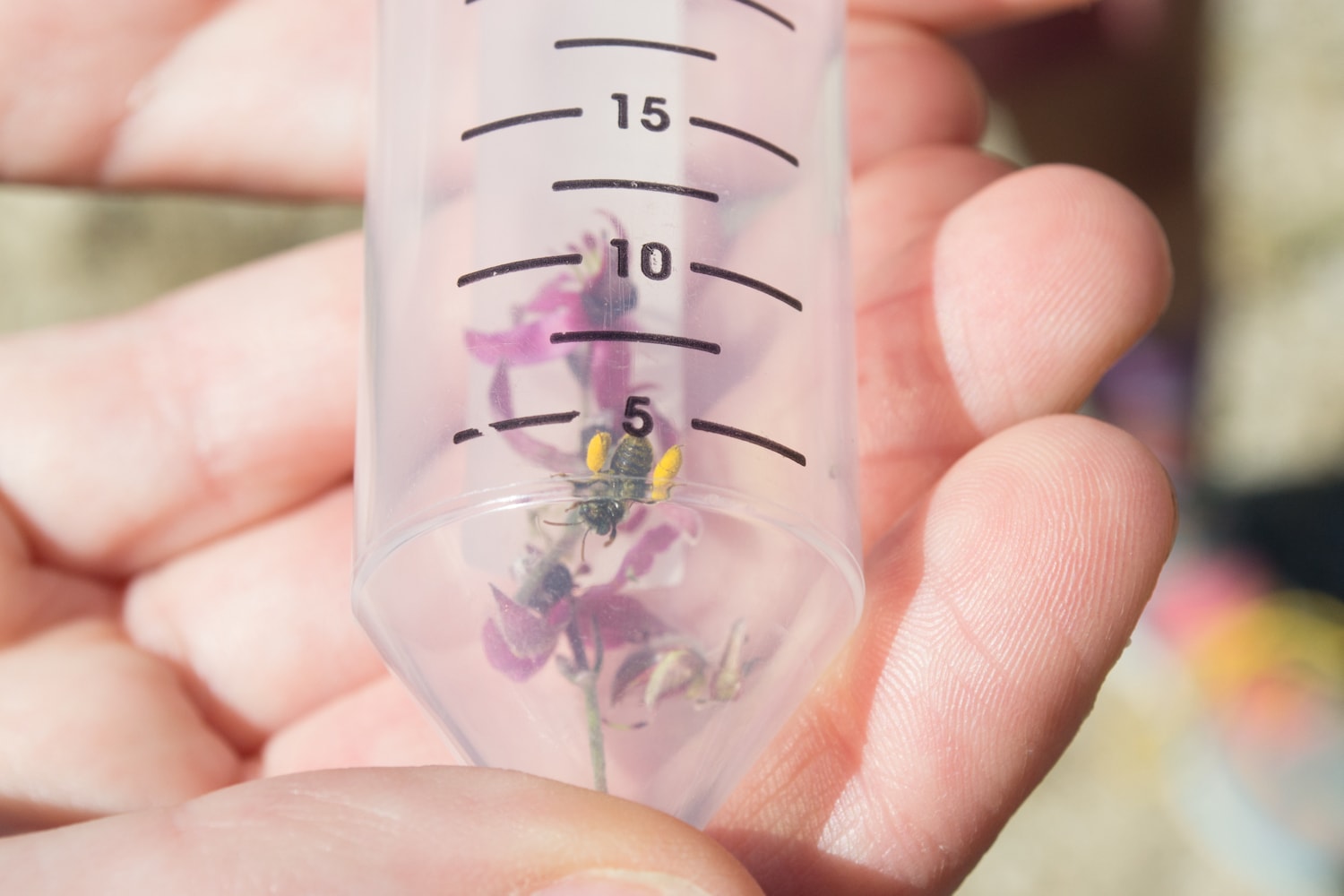
A bee in the Exomalopsis genus caught collecting pollen on a white rhatany busy (Krameria bicolor). The pollen is stuck to the bee’s ‘scopae,’ or pollen-baskets of hairs on its legs. Photo by Christopher Intagliata.
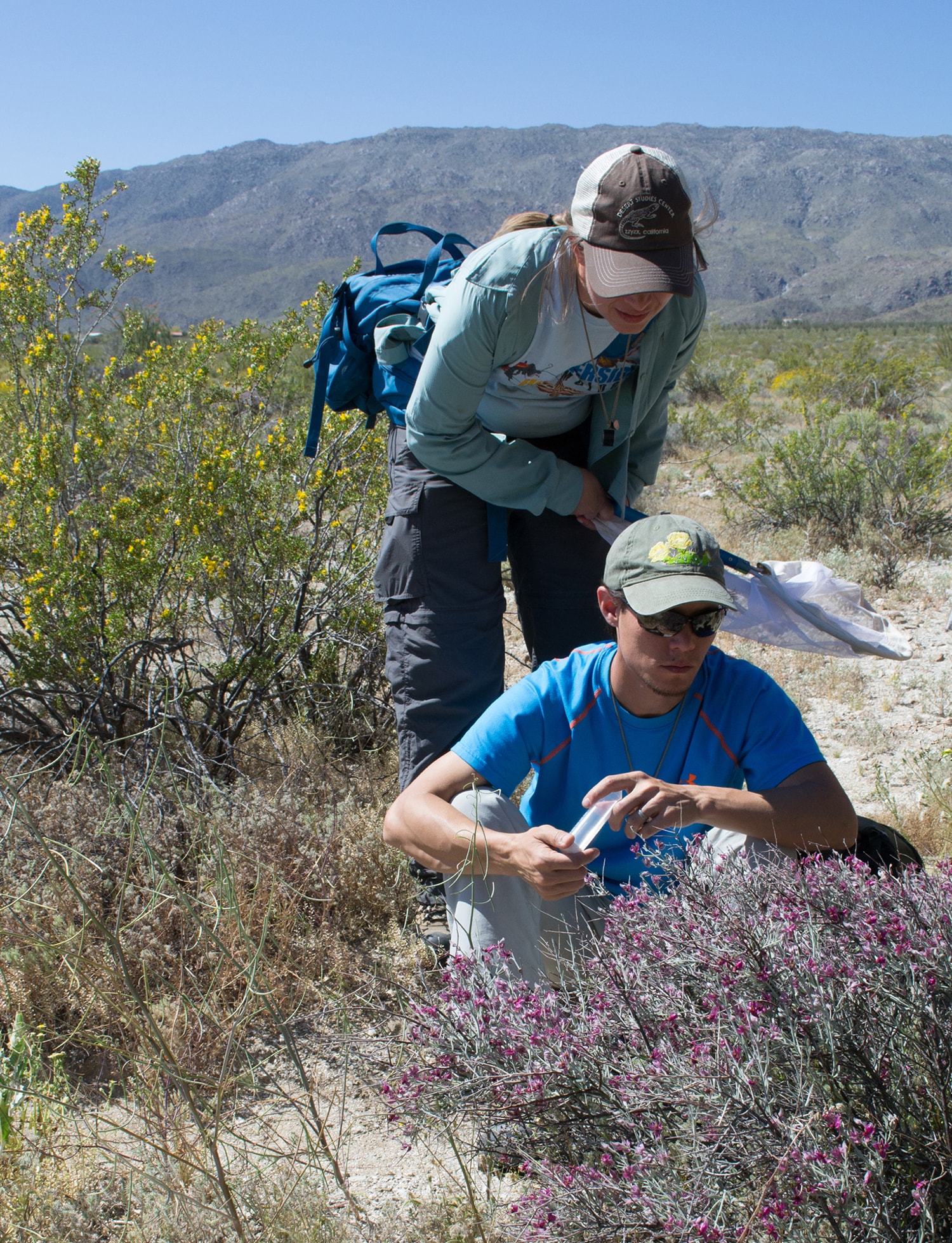
Kristal Watrous and Josh Der lie in wait for wild bees at a Krameria bush. Photo by Christopher Intagliata.
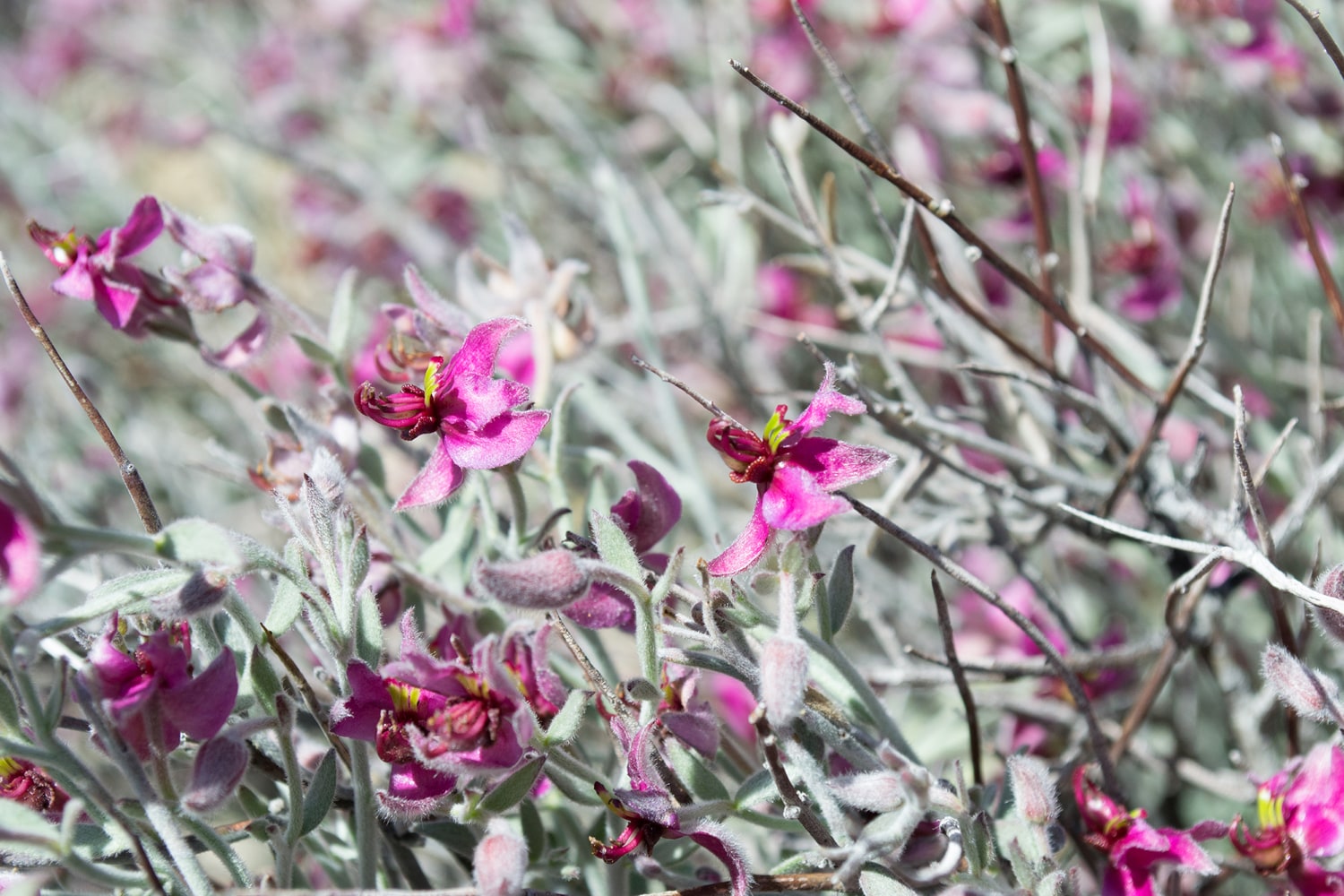
White rhatany, or Krameria bicolor flowers. The flowers produce oils that Centris bees feed to their young. Photo by Christopher Intagliata
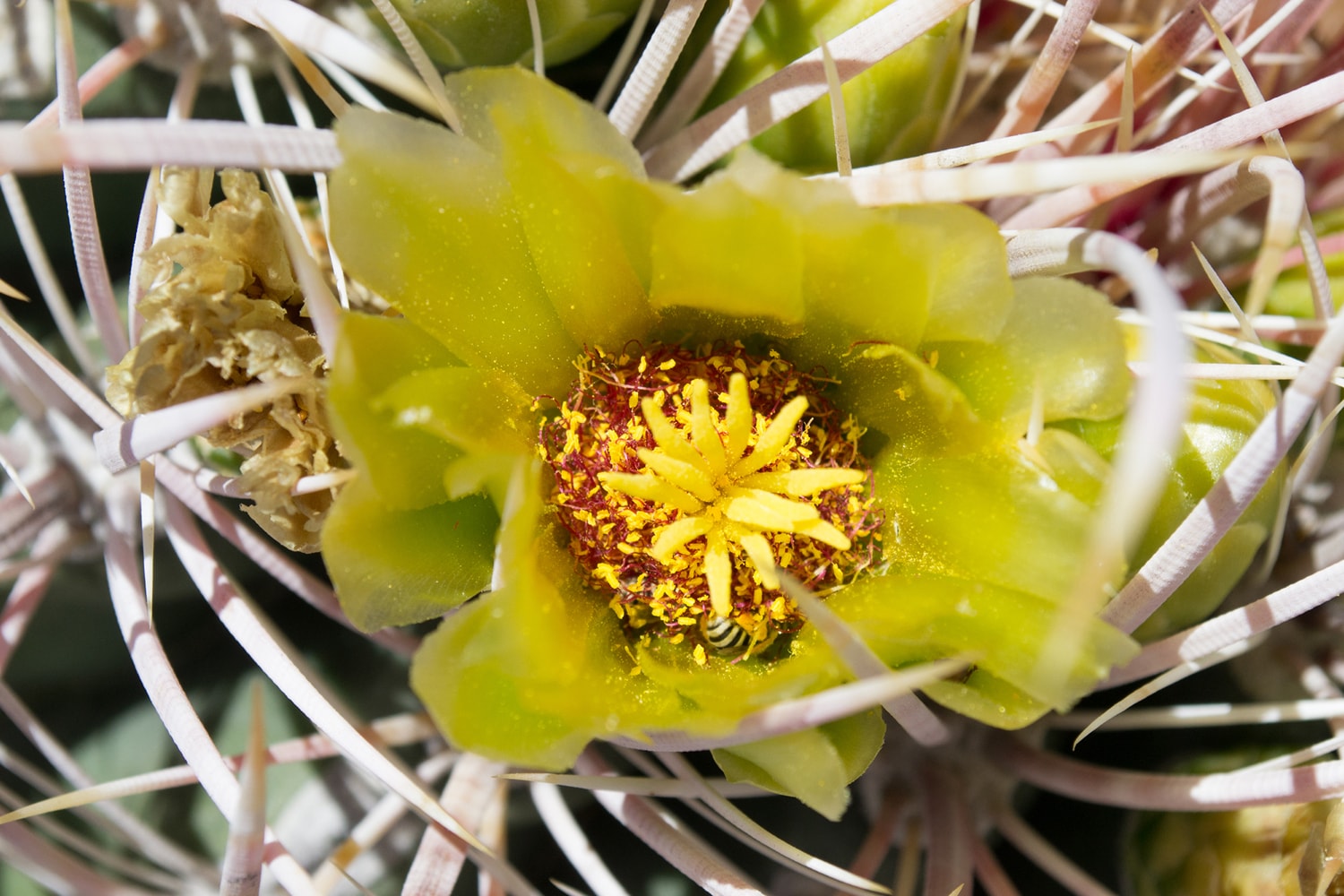
Wild bee burrowing into a barrel cactus bloom. Photo by Christopher Intagliata.
And here’s another with @melittophile, this time showing the peek-a-boo pollen bees find when they land on indigo bush (Psorothamnus sp) pic.twitter.com/2mklOFWjA0
— Chris Intagliata (@cintagliata) April 4, 2017
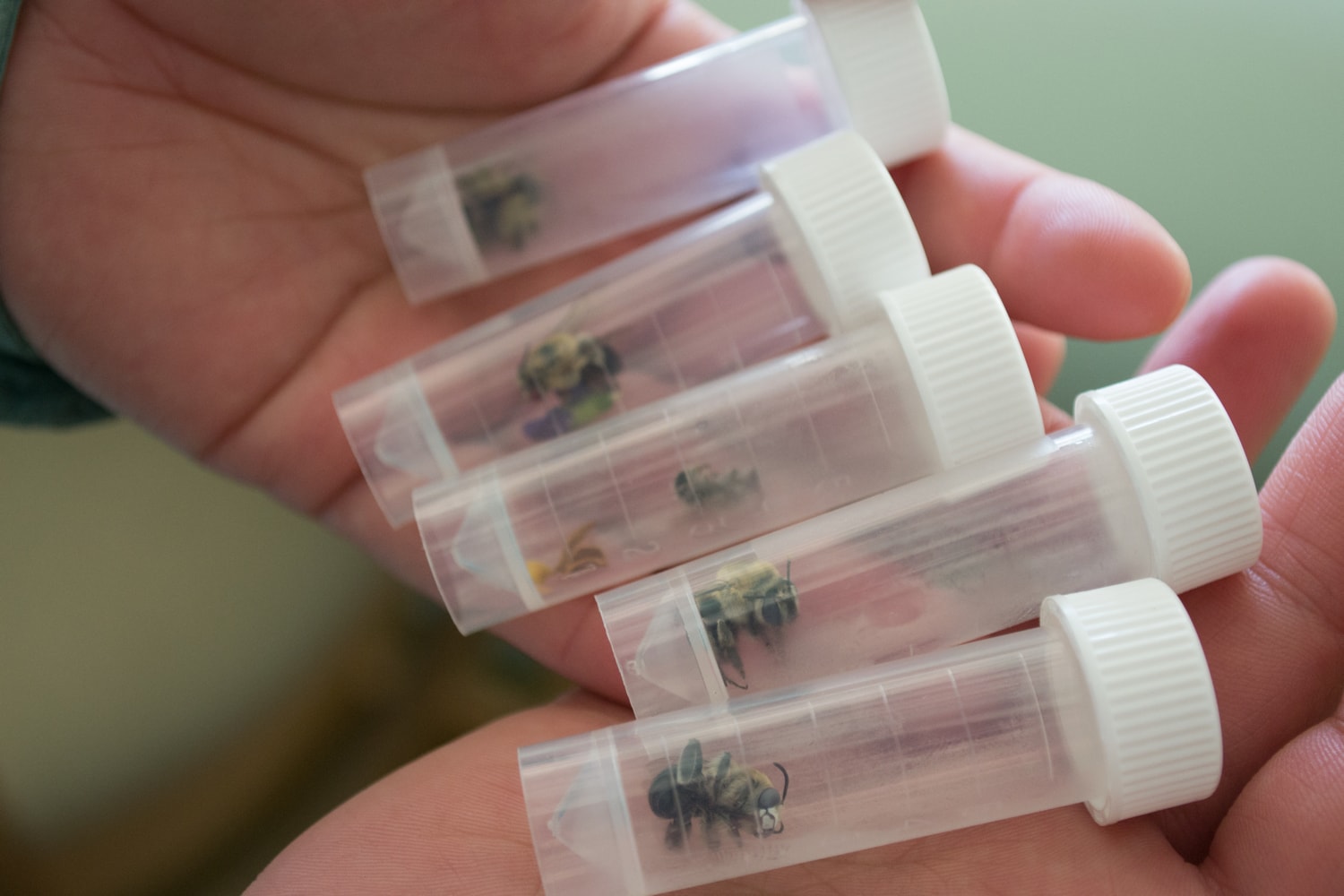
Wild bees collected near the Desert Research Center. Photo by Christopher Intagliata.
Christopher Intagliata was Science Friday’s senior producer. He once served as a prop in an optical illusion and speaks passable Ira Flatowese.